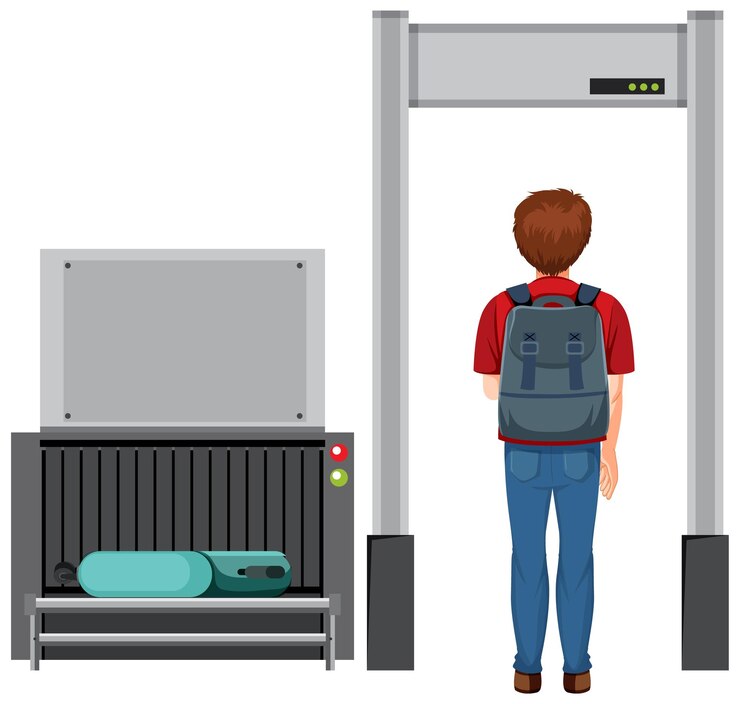Yes, stainless steel can set off metal detectors due to its high iron content. Stainless steel is a common material that can trigger metal detectors and cause false alarms.
It is an alloy composed of iron, carbon, and other elements, making it sensitive to metal detection technologies. Many security checkpoints use metal detectors to screen individuals for any metallic objects they may be carrying, and stainless steel items can be picked up by these devices.
Therefore, it’s essential to be aware of this when passing through security checkpoints to avoid unnecessary inconvenience. Understanding the properties of stainless steel and its interaction with metal detectors can help individuals better navigate security protocols and ensure a smoother screening process.

Credit: www.londonupperlimbsurgery.co.uk
Understanding Stainless Steel
When it comes to metal detectors, stainless steel often raises questions about whether it can set off the alarms. To understand how stainless steel interacts with metal detectors, it’s essential to comprehend its composition, properties, and common uses in daily life.
Composition And Properties
Stainless steel is an alloy composed primarily of iron, chromium, and nickel. Typically, it also contains small amounts of other elements such as carbon, manganese, and molybdenum. This unique composition provides stainless steel with its notable qualities, including corrosion resistance, durability, and strength.
Common Uses In Daily Life
In daily life, stainless steel finds extensive use in various applications. Some of its common uses include:
- Utensils and cookware
- Architectural and construction materials
- Medical instruments and equipment
- Automotive components
- Decorative and functional hardware
How Metal Detectors Work
Understanding how metal detectors work is essential to determine if stainless steel sets off metal detectors. Metal detectors rely on certain principles and mechanisms to detect various metals. These detectors operate based on the concept of electromagnetic induction, which is the generation of electric currents in a conductor due to its interaction with a changing magnetic field.
Principles And Mechanisms
Metal detectors work by generating a magnetic field and then detecting any disruption in that field caused by metallic objects. The basic components of a metal detector include a coil of wire and a power source. When the coil is energized, it produces a magnetic field. As the detector is moved over a metal object, the magnetic field is disturbed, resulting in an electrical signal. This signal is then processed and triggers an alert to indicate the presence of metal.
Sensitivity To Various Metals
The sensitivity of metal detectors to different types of metals varies. Pure metals such as gold and silver are highly conductive and produce significant disturbances in the magnetic field, making them easier to detect. Ferrous metals, including iron and steel, are also easily detectable due to their magnetic properties. On the other hand, non-ferrous metals like aluminum, copper, and stainless steel are less responsive to metal detectors. Stainless steel, in particular, can be challenging to detect due to its low magnetic permeability and non-conductive nature.
Stainless Steel And Metal Detection
Stainless steel is commonly used in a wide range of applications due to its durability and corrosion-resistant properties. However, there is an ongoing debate about whether stainless steel objects can set off metal detectors. In this section, we will explore the interaction between stainless steel and metal detectors, as well as the factors that can affect the accuracy of metal detection.
Interaction With Metal Detectors
When stainless steel encounters a metal detector, it can generate a signal that triggers the alarm. This is because metal detectors work by detecting the presence of metal objects based on their conductivity and magnetic permeability. Stainless steel contains iron, which makes it susceptible to detection by metal detectors. The magnetic properties of stainless steel and its ability to conduct electricity enable metal detectors to identify it as a metallic object.
Factors Affecting Detection Accuracy
Avoiding false alarms and ensuring accurate detection with stainless steel objects can be influenced by various factors. These include the type of stainless steel and its alloy composition, the size and shape of the object, as well as the type and sensitivity of the metal detector being used. For instance, thin stainless steel items may be less likely to trigger metal detectors compared to thicker, more substantial objects.

Impact On Security And Safety
Implications In Different Settings
Stainless steel is widely used in various settings, including airports, schools, and government buildings. Its presence in everyday items such as cutlery, mobile phones, and medical implants raises concerns about its impact on security and safety. When passing through metal detectors, stainless steel items have the potential to trigger alarms, causing inconvenience and potential delays. This has significant implications for security personnel and the general public.
Mitigating False Alarms And Risks
In order to mitigate the occurrence of false alarms and minimize risks associated with stainless steel items, security protocols must be adapted to accommodate the prevalence of these materials. This may entail the implementation of advanced scanning technology, increased training for security personnel, and clear communication to ensure that individuals are aware of the potential impact of stainless steel on metal detectors.
Frequently Asked Questions On Does Stainless Steel Set Off Metal Detectors
Are Stainless Steel Items Detectable By Metal Detectors?
Yes, stainless steel can set off metal detectors due to its conductive properties. However, the specific sensitivity of the metal detector and the size/shape of the stainless steel item can impact detection results.
What Factors Can Influence Stainless Steel Detection?
Several factors can influence stainless steel detection, including the shape, size, and orientation of the object, as well as the sensitivity settings of the metal detector utilized.
Does The Grade Of Stainless Steel Affect Detection?
Yes, the grade of stainless steel can impact detection. Higher grades with more nickel and chromium content may be more detectable compared to lower grades with less metallic content. However, detection may vary across different types of metal detectors.
Conclusion
Stainless steel can set off metal detectors due to its magnetic properties. This can affect security screenings in venues such as airports and government buildings. It’s important to be aware of this if you frequently pass through metal detectors. By understanding how stainless steel behaves, you can prepare effectively for these situations.
